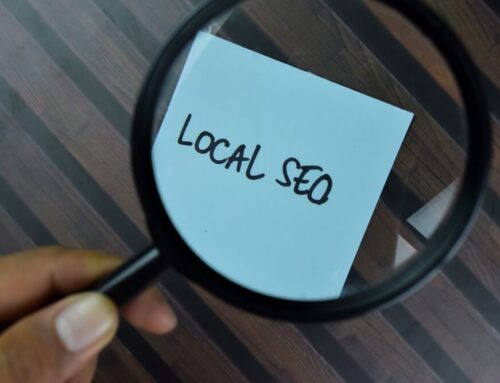Ever wonder how long does Google take to remove outdated content? It would be much easier to do than manually updating or deleting old content. You may be hesitant to make any content changes if the current content still generates consistent website traffic and benefits your business. Before you take any steps to remove content on an outdated website, you may want to look at these SEO factors that can impact your business.
Before Updating an Outdated Website
From an SEO perspective, deleting or replacing outdated website content can be risky. It can be costly, time-consuming, and counterproductive to remove outdated content on Google because it may still be ranking well on search engines. Your current content could still be generating sales and leads that can grow your business. Before moving forward and changing anything, it’s recommended to check a few metrics first to verify if it’s worth it in the first place.
The Google Search Console has two different tools to remove content from search results. The first is called a “remove the outdated content tool,” and it’s used to request de-indexing of pages on other sites. The second is called the “remove content tool” used by site owners to remove their own pages quickly. When you want to remove outdated content on Google from your own site, here’s where to start:
- Test it first- You want to make sure that outdated website content is no longer useful by testing it first. The best way to accomplish this is to check bounce rates, conversions, and time spent on the page you are updating. You’ll want to be completely sure if the current outdated content is still contributing to your business goals and objectives by checking if current conversions are increasing or decreasing. You might have high newsletter sign-ups but low product form completion. If this no longer aligns with your goals, it’s time to make changes to the Google outdated content.
- Analyze next — By analyzing the new content you intend to replace the outdated website content with, you’ll be able to assess whether the current rankings will be better than before. If you’ve been able to secure highly competitive keywords and phrases, the new content will positively impact your SEO and sales leads results. You’ll also have to make sure you are comfortable losing search engine visibility for old keywords and phrases.
- Review Google Search — With Google Search Console, you can assess many SEO metrics like search queries and page URLs. It allows you to track click data over time and uncover new trends. You’ll want to ask the right questions about click rates falling, improving, or remaining steady. The data will help you produce an accurate assessment of the health of your website. This is valuable information when you remove outdated content on Google.
- Review traffic — The website traffic generated from your old content is critical to assess before you remove outdated content on Google. If the outdated website content still generates a good amount of traffic, you’ll want to dig deeper into specific metrics like geographic locations. The idea is to build context around what natural search visitors did when they arrived at the outdated website content. From this information, you can accurately determine whether redirecting or updated content is beneficial. Understanding whether the previous visitors were a good fit for your content and goals will give you a better roadmap for making new changes.

Outdated Website Content You Want to Keep
You will likely have outdated website content you will want to keep. It may just need minor changes or a fresher perspective. Here’s how to make the most of your outdated website content that is worth keeping:
- New content — Your current outdated website content may be outranking new content and still aligns with your business goals and objectives. You may want to interest customers in new products or services by connecting the current content with the new information. Taking these steps will allow you to maintain your page rankings while redirecting customers to new offerings.
- New backlinks — Take the time to study referral traffic to existing pages. You can do this by examining backlinks from websites, news media, blogs, and more. Older pages may perform better because they’ve been around longer and have collected more backlinks. It will be beneficial to reach out to the referring websites to request the backlinks to direct to your new content. Decreases in backlinks may impact an old page ranking, but the new page will gain a ranking advantage.
- Freshen up — Small outdated website content changes to freshen up old information like updating old references or mentioning new resources can significantly impact SEO. Other simple but effective changes may include referencing a relevant infographic or embedding a current video. The Content Marketing Institute makes content updates like this but uses a new URL. They use a date URL structure to redirect users to new versions of content. This can cause significant shifts in Google traffic.
- No duplicate stress — Keeping duplicate content is nothing to worry about. If you chose to keep original content, a few duplicate pages will not have a major impact on your Google rankings. Issues of duplicate content impact those with hundreds or thousands of pages.
Permanently Removing Google Outdated Content

How long does Google take to remove outdated content? Google outdated content takes up to 90 days to remove after you’ve made the request. Your request is immediately in effect, but it takes up to 90 days for Google to display the correct content. You will need to take additional steps to permanently remove the content from Google search results.
To have Google content removed permanently, you must be the verified site owner of the page in the Google Search Console. You will be directed to a special Google tool called Remove Outdated Content Tool, which is simple to use. It’s important to note that removing content from Google search doesn’t mean removing it from the web entirely. There are some extra steps that need to be taken to accomplish this. For now, these are the steps to take to address content on Google search:
- Google search removal — You will need to decide whether you want content removed from Google search or from the web entirely. To permanently remove or block outdated website content, you will need to know who controls the source page. When you want the content removed from both Google search and the web, you will have to initiate these steps separately. You will need to remove all URL variations because there may be several URLs that point to the same outdated website content. If you own this information, you can temporarily hide the information through a URL removal request.
- Google removal requests — The process for removal requests is a simple and easy one. It only takes 24 hours to remove the content and cache from Google once the request is submitted using the tool mentioned above. It will take up to five business days for the status to be removed. Your request will expire before 90 days if the content has been removed or redirected. The process is created to remove any sensitive information indexed by Google search.
- Google image removal — You can also delete an image on Google search. It is the same simple process as removing outdated website content. Removal of images only takes a day, but it is temporary. The image will reappear after 90 days. To permanently remove images, you must take additional steps that require verifying the page source owner.
Old content will always be a challenge since most marketers and business owners value evergreen content. You may not want to remove outdated content if it still ranks well and delivers leads. Taking the risk of redirecting old information to newer content may not produce the results you desire. By measuring the current content against what you want to replace it with before making those changes, you can make an informed decision about Google’s outdated content.
We Help with Google Outdated Content
It’s important to take inventory of your current advantage and initiate new content to enhance what is already working well. As a business owner, you may not have the time to do this effectively. By partnering with Rosy Strategies, you won’t have to worry about your online presence anymore. We specialize in SEO strategies that align with your business goals and objectives.
Contact us today for a free marketing audit to get started!










